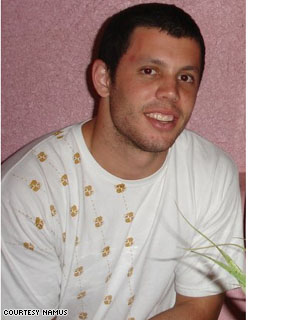 CNN Blogs- Last week, a young man hours away from starting a new job took a bike ride in Lubbock, Texas, and hasn’t been seen since.
CNN Blogs- Last week, a young man hours away from starting a new job took a bike ride in Lubbock, Texas, and hasn’t been seen since.Decades earlier, on March 15, 1967, the remains of a woman clad in a blue dress and white shoes were discovered in a field in Baltimore.
The two cases are separated by nearly 2,000 miles and more than 42 years. Yet they share a common bond: they have never been solved.
There is now another, more hopeful connection. They are just two of thousands of cold cases and now all of them can be found on a single free web site that is funded by the federal government. It is designed to help law enforcement agencies and medical examiners across the country unravel the mysteries. It also gives countless families a place to look for loved ones and a chance to find answers and peace of mind.
It is the National Missing and Unidentified Persons System. Known as NamUS, the site offers what may be the most comprehensive public search engine to date for this undertaking. “With advances in forensic sciences, there is always the possibility of closing an old case,” NamUS Operations Manager Billy Young told CNN. “No matter how old the records are, we have someone looking at them.”
NamUS, which was launched in 2007, was commissioned for the National Institute of Justice. It is operated by the National Forensic Science Technology Center, located in Largo, Florida.
In an email to CNN, Christine Vivian, the organization’s communications director, explained the genesis behind NamUS, writing it “was created to address the issue of the estimated 40,000 unidentified dead nationwide, and give families a tool to assist in finding missing adults.”
“As more cases are entered into the system, more people in every area – law enforcement, victim advocacy and the general public can become part of the conversation that will resolve cases.”
The missing persons database contains 1,996 individual files, of which more than 92 percent remain open – including the disappearance of that young man in Lubbock. His name is William Bradley Klosterman. Known as Brad, the 20-year-old hopped on his new Fuji bike around noon on August 11. He said he was going to visit a friend. He left without taking his i.d., his wallet, or cell phone.
Klosterman was last seen wearing black mesh running shorts and a black-t-shirt with the word “Southlake” on the front. He also has a small scar on the outside of his right eye and a tattoo that says “Psalm 23″ on his right arm. Authorities believe he may have been traveling to California.
It is the same theory that investigators had nearly half a century ago with the disappearance of Lyndal Ashby. On October 23, 1960, the 22-year-old Ashby vanished in Hartford, Kentucky. As with the other cases in NamUS, the file on Ashby includes police contact information.
The NamUs National Unidentified Decedent Data System lists 5,564 cases. But only 147 have been closed. The woman in the blue dress is not one of them. Her skeletal remains were found in a Baltimore field in the winter of 1967, but forensic experts believe she probably died the previous year. She was 5′3″ and between the ages of 21 and 45.
The file on the woman’s case is limited. However, there are thousands of other entries for both NamUs databases that have detailed information on condition and physical characteristics, clothing, accessories, police reports, photographs, and dental charting.
Case #5593 is a representative example. A man believed to be in his thirties was found intoxicated and unconscious on the ground in Queens, New York on May 31 of this year. He was taken to a hospital where it was determined he suffered a traumatic brain injury. He died on June 3.
The man, who had black hair and was wearing blue jeans, had several scars on his body. He was also missing part of his right second finger.
Perhaps he had children, or maybe a wife waiting for him at home. Nobody knows for sure. But there is probably someone who wants to know what happened to that man. And they are joined by many others throughout the country. With NamUS, they all have somewhere to which they can turn.
“It lets them know that someone is constantly looking for their loved ones and they are not being forgotten, Billy Young said to CNN. “It gives them hope that one day they will be able to get closure.”















No comments:
Post a Comment